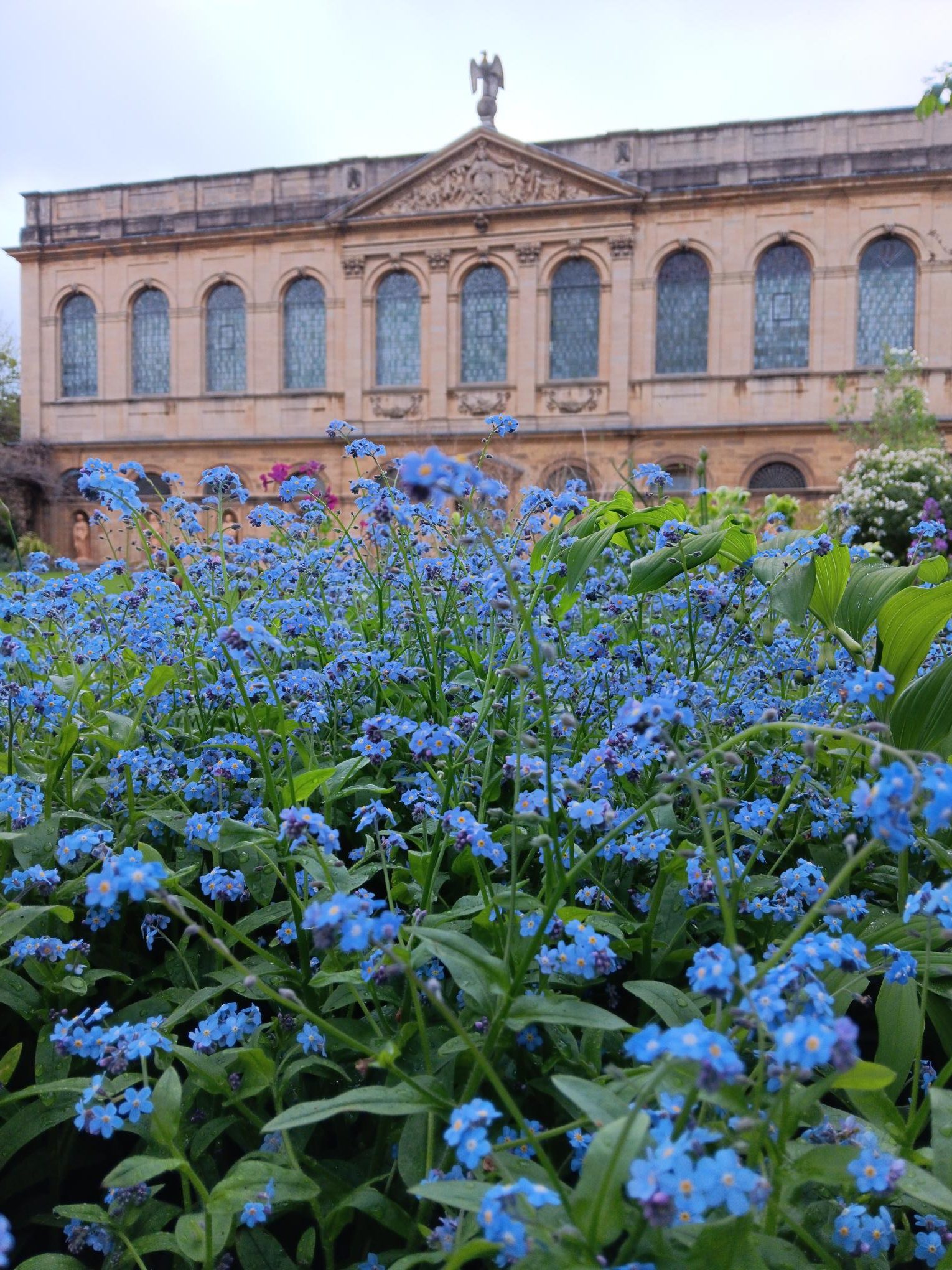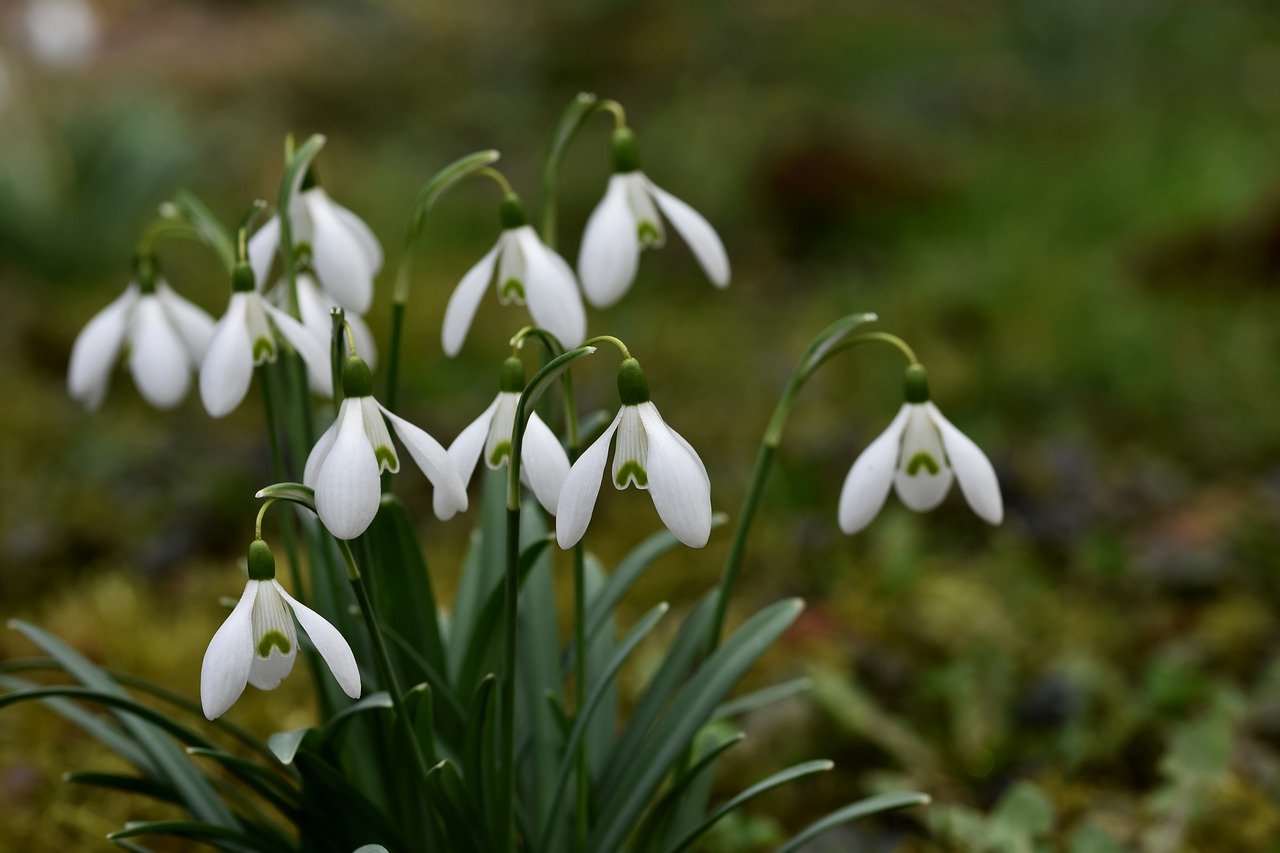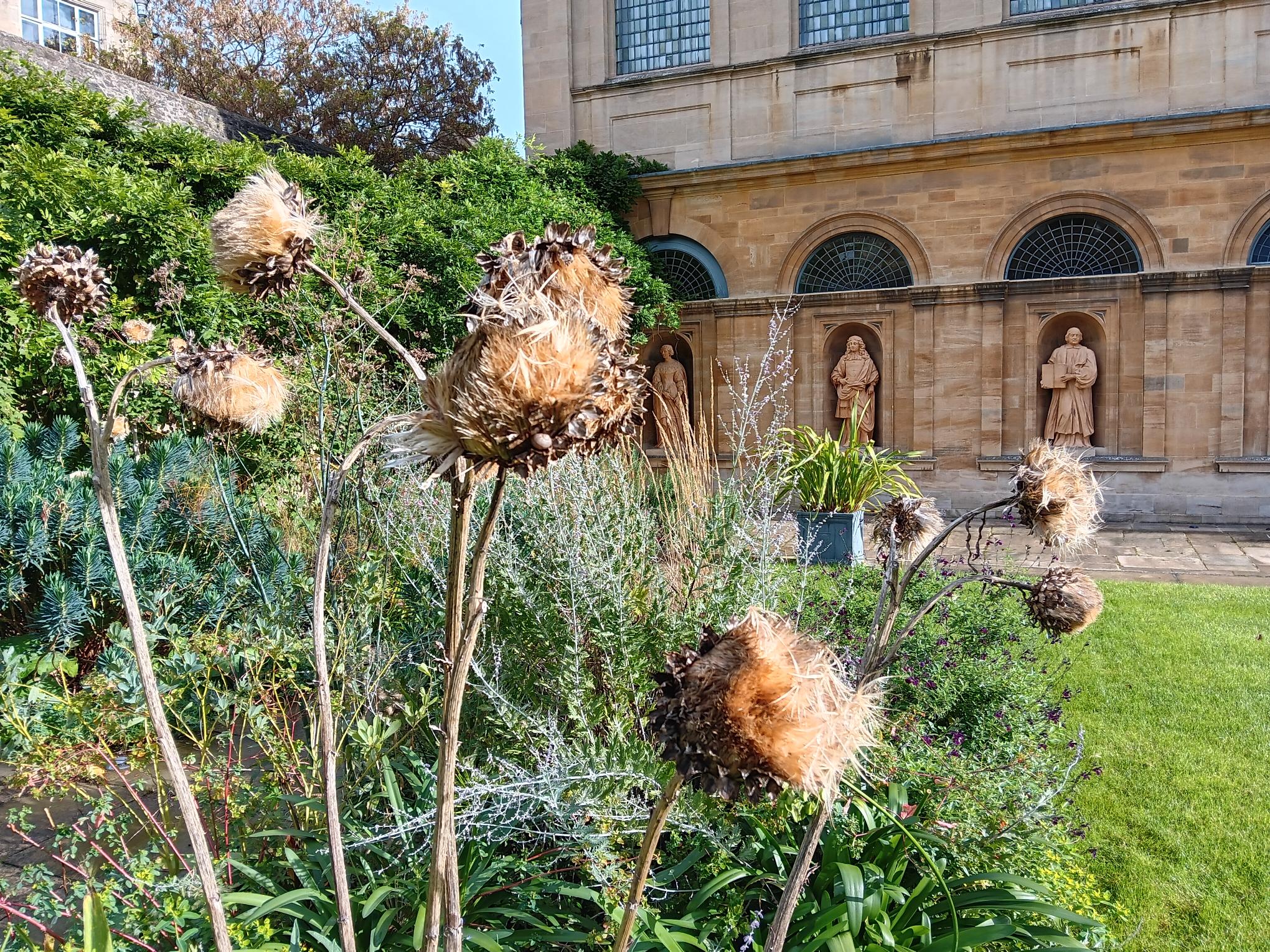by Head Gardener Gwyneth Hanson
Whether it is the ‘Cost of Living Crisis’, concerns regarding food security or the safety and nutrition of bought-in food – there are many reasons that may prompt those lucky enough to have a bit of outdoor space with the desire to ‘Grow Your Own’. But not many people who enjoy their garden would necessarily want to swap beautiful borders for rows of potatoes.
However, there doesn’t always need to be a sacrifice, as increasingly there are many plants that will produce food and flavourings and yet be an attractive addition to a garden. A term for this range of plants is ‘edimentals’ (edible ornamentals), a word you may have come across during both this year’s and last year’s Chelsea Flower Show coverage.
Some edimentals are obvious ones that have been with us for many centuries, like herbs. Many herbs, especially cultivars bred for their appearance as well as taste, are so attractive that people have often created a herb garden, or put potted herbs by the house, as much to enjoy the sight and smell of them as for harvesting. There are lots of different types of herbs growing in the College gardens, especially in the Provost’s Garden, particularly rosemary due to its association with Queen Philippa, with her being credited with its reintroduction to the British Isles.
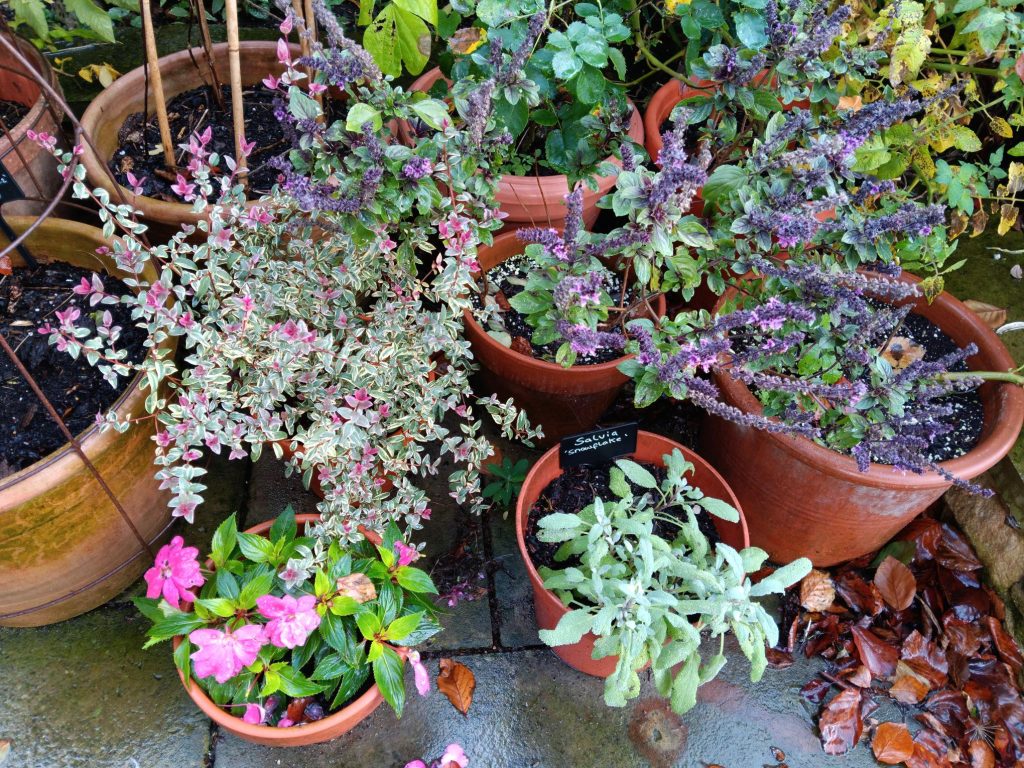
Unfortunately much of the rosemary has been badly eaten by rosemary beetle this year and is also getting old and woody so I will be replacing it with a mixture of cultivars of new rosemary plants this autumn.
Vegetables may not be the first thing that springs to mind if asked to think of a beautiful plant, but actually some were imported for their looks before they were discovered to be a versatile food. An example of this is the ubiquitous tomato, which was brought back to Europe in the 16th century for its colourful berries, but was presumed poisonous due to its obvious similarity to its relative nightshade. It took until the 19th century to really become accepted here as a food!
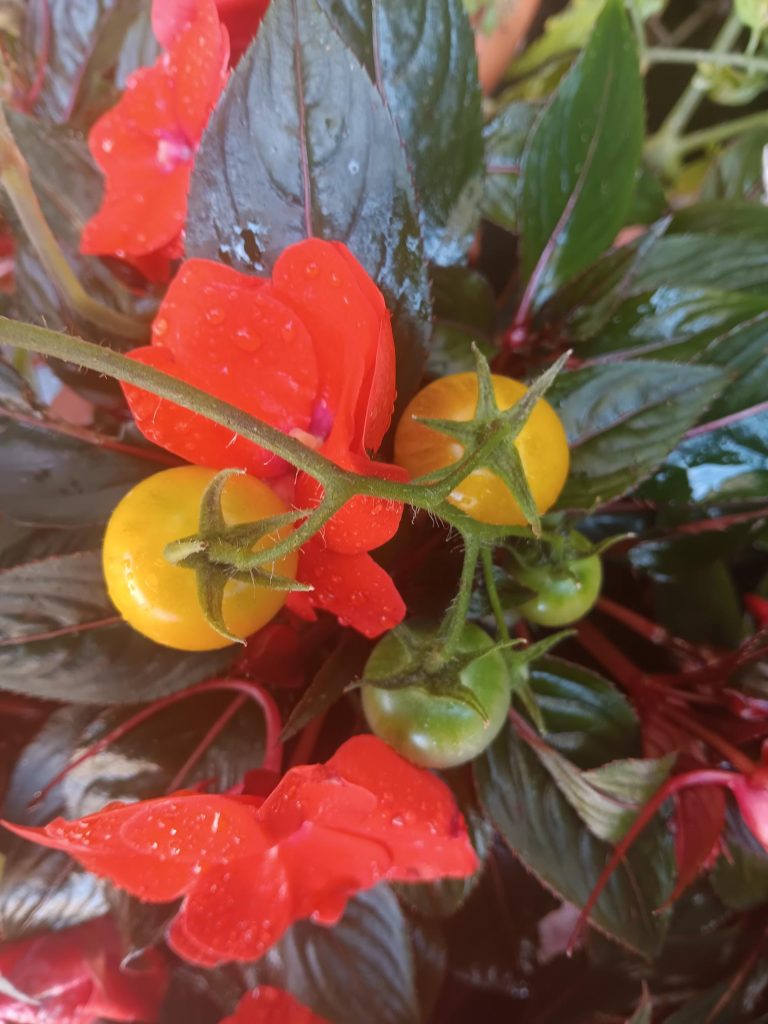
Runner beans were also introduced from the Americas as an ornamental by John Tradescant the Younger for King Charles I, with its red flowers being the feature that made it garden-worthy. The beans weren’t really eaten in the west until the 18th century, even though it was long cultivated as a crop by indigenous folk, who traditionally grew it with sweetcorn (which it grew up) and squash (which shaded the roots of the other two) in the ‘Three Sisters’.
I think that the Runner Bean still makes a wonderfully ornamental climber with not just red but also pink, white & bi-coloured flowers. Some like ‘Black Knight’ have purple pods too. French beans and various peas also produce beautiful flowers, and pods that come in purple, yellow or other shades.
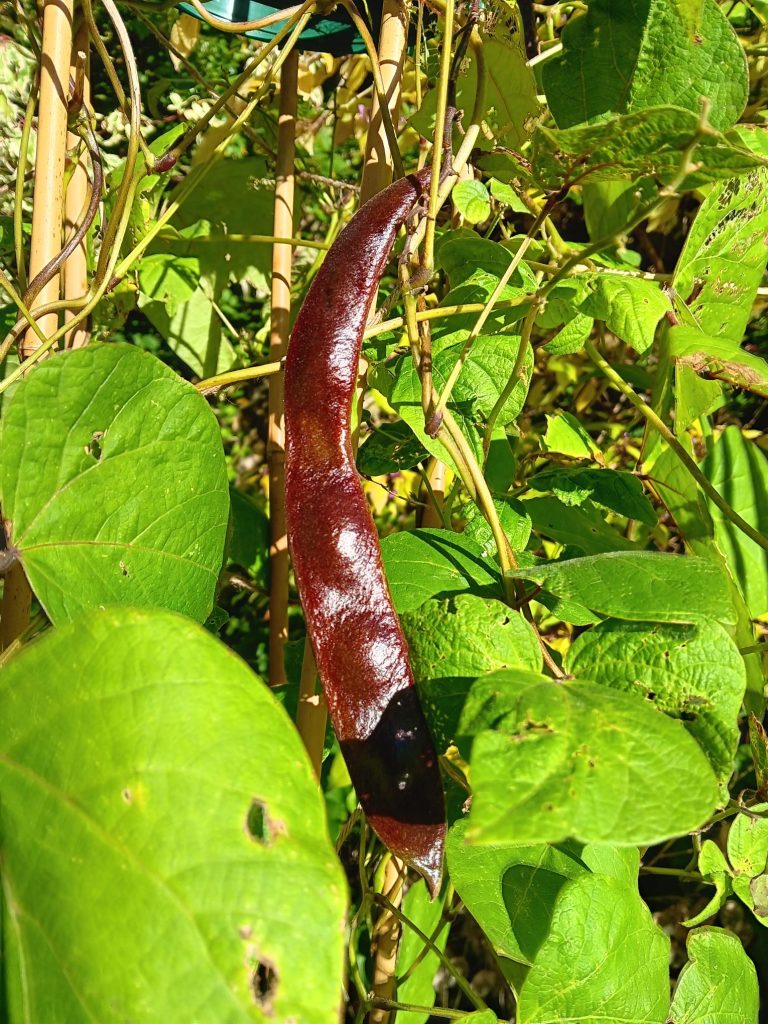
So, what other food plants can be grown as an edimental? There are modern vegetable breeds where appearance has been selected for, for instance Kale ‘ Rainbow Candy Crush’ or try the Kale ‘Redbor’. There’s also a renewed interest in heritage vegetables that often come in more interesting colours, like Lettuce ‘Freckles’. Even if you grow conventional veg you can improve their looks by growing them in a formal French-style potager garden; or if you haven’t got the space to copy the kitchen garden at Versailles, or prefer a more informal relaxed feel, then planting them mingled with your flowers as a modern take on a traditional Cottage Garden will be just as attractive.
You can also try plants that are now regularly eaten, but still not grown here as often, like beetroot leaf which is often used in bistro salad mixes, but the cultivar ‘Bulls Blood’ is a fantastic foliage plant, as are the chards whose colourful stems and occasionally leaves (e.g. the cultivar ‘Firebird’) really brighten up a garden, lasting well after other plants have finished for the year.
Now let’s think more outside the veg box – vegetables in the Cucabit family have lovely large flowers and courgettes flowers are great stuffed, so you don’t have to wait for the fruit to ripen if conditions are poor. Or swap your courgette, (of which there are some very colourful varieties), butternut squash pumpkins and cucumbers for a pattypan or cucamelons, or, given the weather nowadays, actual melons that can be very ornamental.
This is a great example of how we should consider growing food plants from other countries and cultures. There are now not just vineyards springing up in the UK but tea plantations and even olive groves in the southeast! With our warming world, a whole range of extra plants are now able to crop successfully, especially in urban areas and microclimates (such as college Quads), though some may still require a greenhouse in cooler cloudy conditions or at higher latitudes and altitudes than Oxford. With the growing access to a huge array of food from diverse communities available via restaurants and even in supermarkets, we are increasingly wanting to cook dishes that are not standard-UK meals. We can treat both our taste buds and our eyes by growing crops from abroad. One plant that would definitely be worth trying in a pot on the patio (if you have a brightly-lit space you can move it to in frosty weather) is a Citrus hystrix bush, whose lime-flavour leaves are great for Thai cooking but expensive to buy. Their ‘orange blossom’ scent is an added bonus.
Trees and shrubs are perfect for the edible garden as they only need planting once and can last decades. Apples, pears and cherries are all loved for their spring blossom as well as the fruit harvest and can provide the upper canopy layer in a permaculture-style food forest. Less common fruit trees like quince, medlar and elderberry also make attractive floral additions. Many popular blossom trees will provide edible fruit, such as species of hawthorn and amelanchiers, i.e. lamarkii, canadensis (June berry) & alnifolia. Cornus kousa & Cornus mas also provide small fruits after flowering.
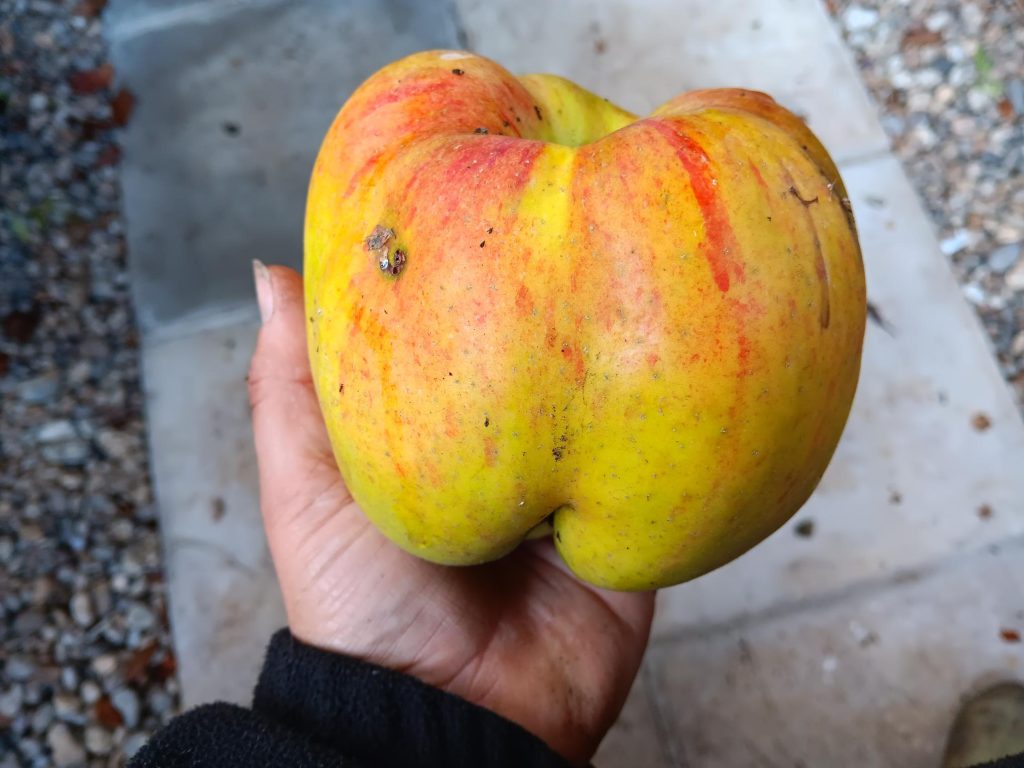
With shrubs, there’s also plenty of choice from Rubus spectabilis ‘Olympic Double’, the Salmon Berry, who is a showy cousin of our native blackberry. Although the fruit is not as prolific, it has fabulous flowers. Also from North America, Ribes aureum aka ‘Buffalo Currant’ – a gorgeous-looking and smelling flowered relative of the blackcurrant blessed with berries that have a milder flavour but are otherwise very similar. And there are the attractive blue Mahonia berries too. We have the pretty yellow-leaved raspberry ‘Groovy ‘ growing in pots in the Provost’s Garden.
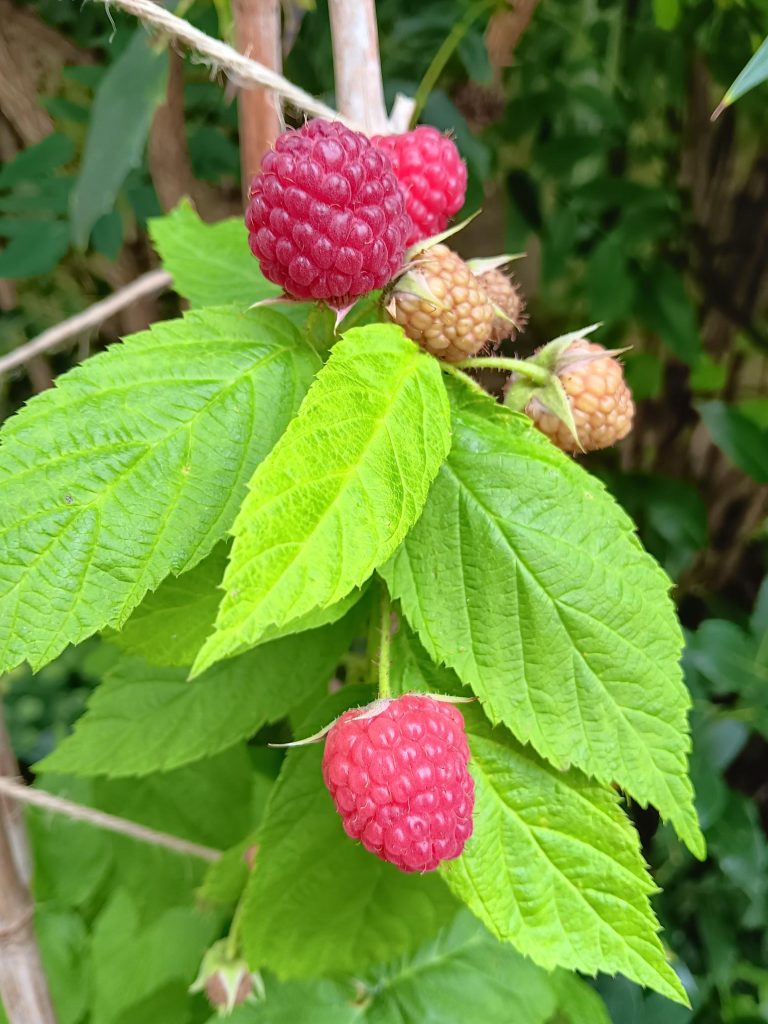
Commonly-grown shrubs will reward you with fruit as well as flowers like fuchsias and of course, roses, which obviously have rosehips for high Vitamin C syrup and tasty flowers.
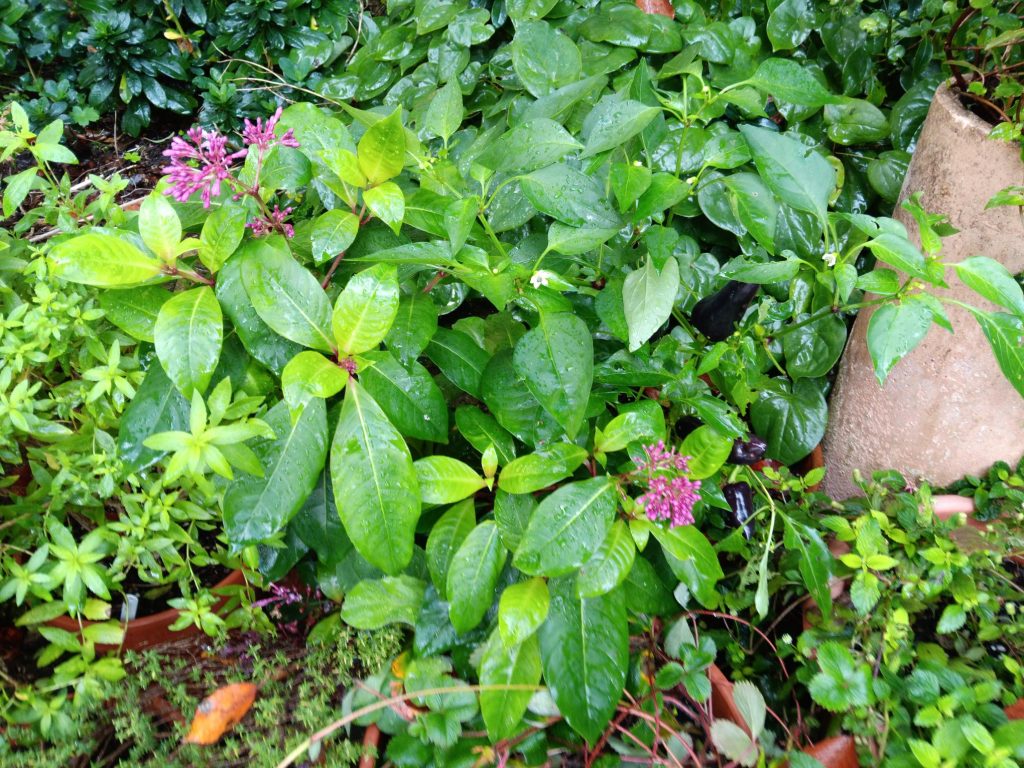
So many well-known and loved plants normally bought and grown for their appearance can provide a feast for a backyard forager. Many plants brought over from gardens outside the UK were considered food in their native abode such as hostas (the Japanese harvested the leaves when still not fully unfurled), dahlias, which have starchy potato-like tubers, and canna, which was also cultivated for its rhizomes. Colocasia is another tropical looking plant becoming very popular for its amazing large leaves, but is grown oversees as a root crop called ‘Taro’.
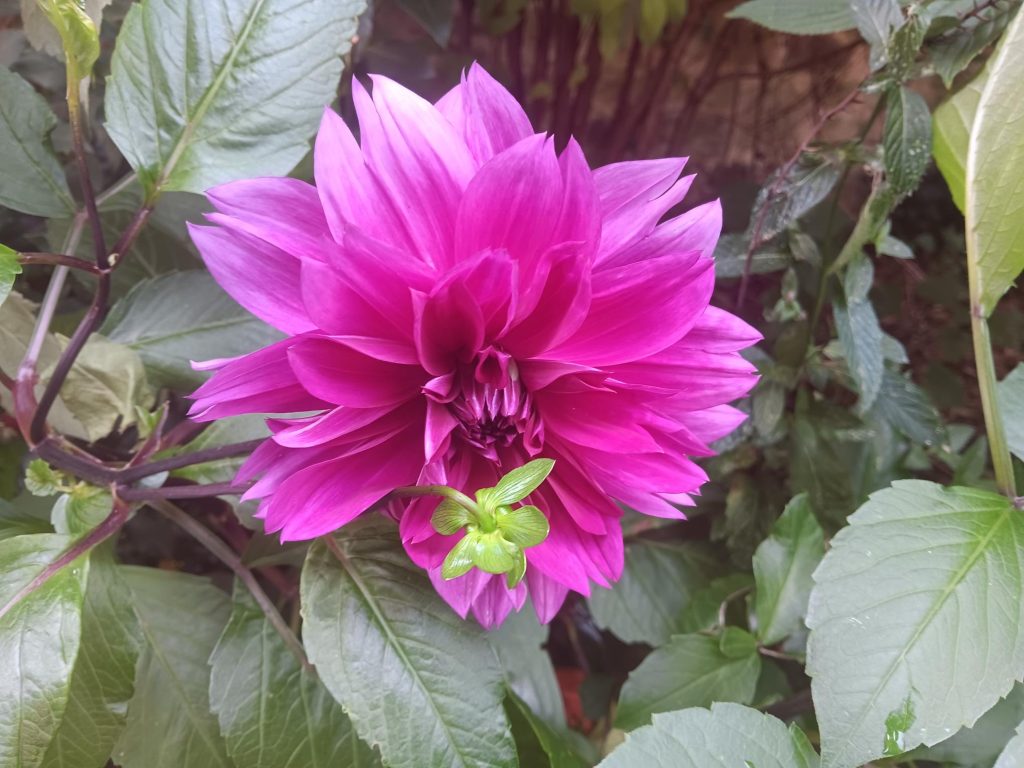
There is also a smorgasbord of flowers that can be munched in a salad from spicey nasturtiums, perfumed primulas, pot marigolds, evening primroses, daylilies and violas, and even magnolias (which tastes of ginger)!
An assortment of edibles can be found in the Queen’s College Gardens, including the recently added aprium tree (a hybrid between an apricot & a plum) in the Fellows Garden, all being a visual treat as well as closet culinary plants. There is a selection of them in pots on the patio in the Provost’s Garden, so I hope you look out for them when you are next in College.
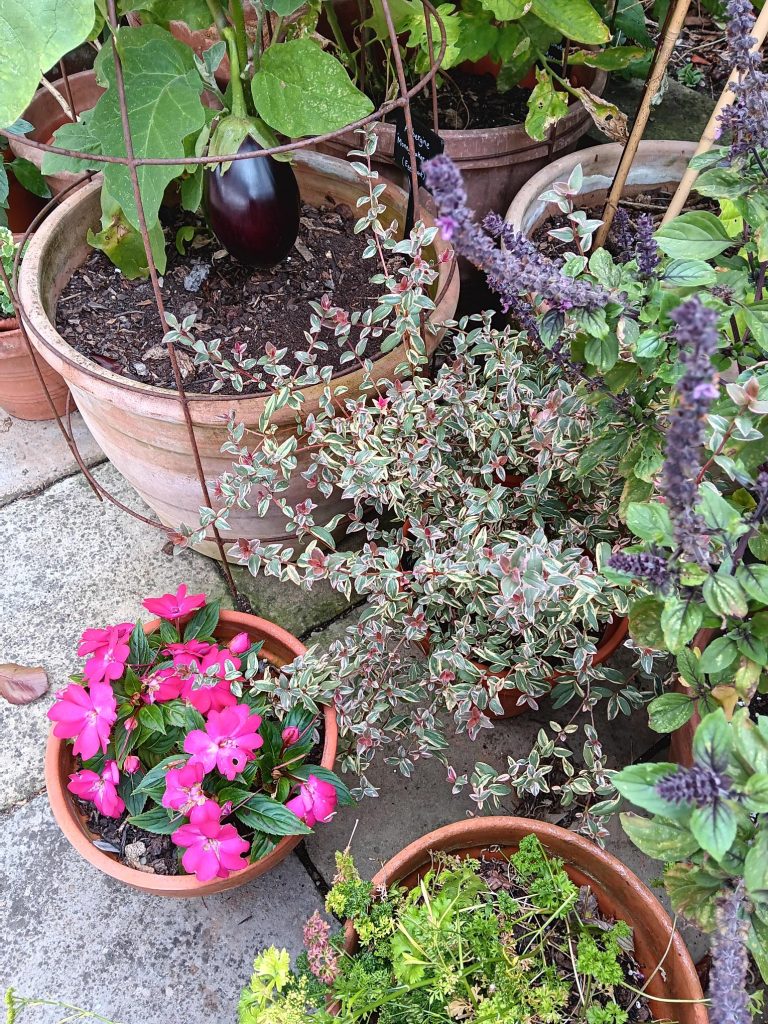

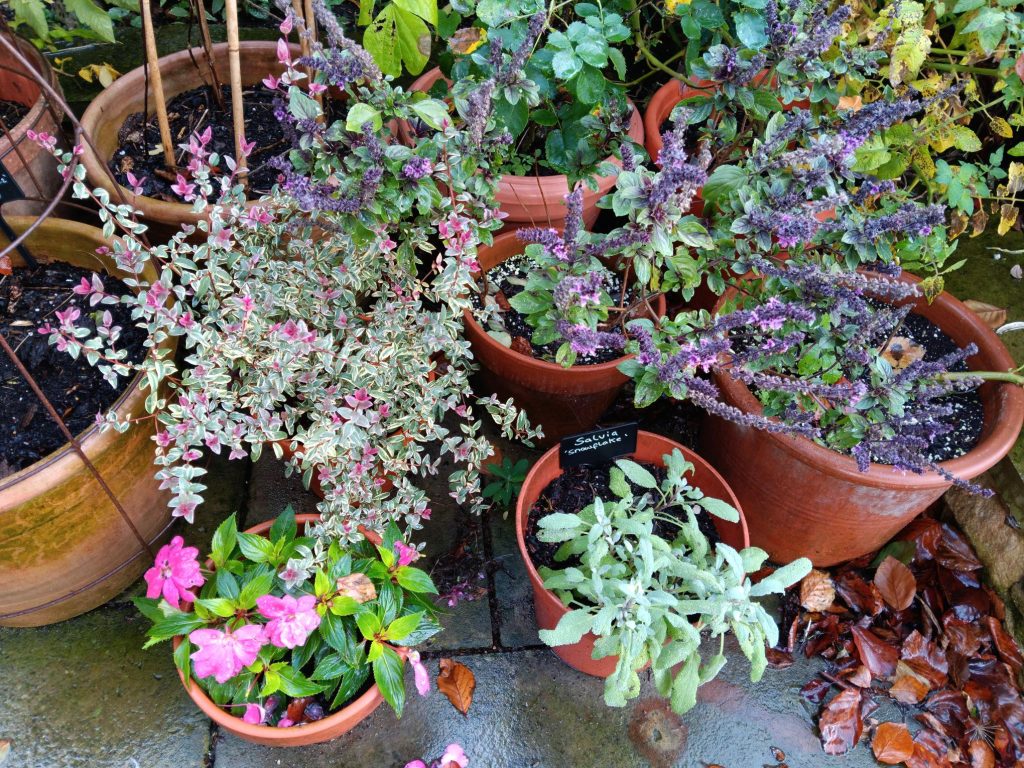


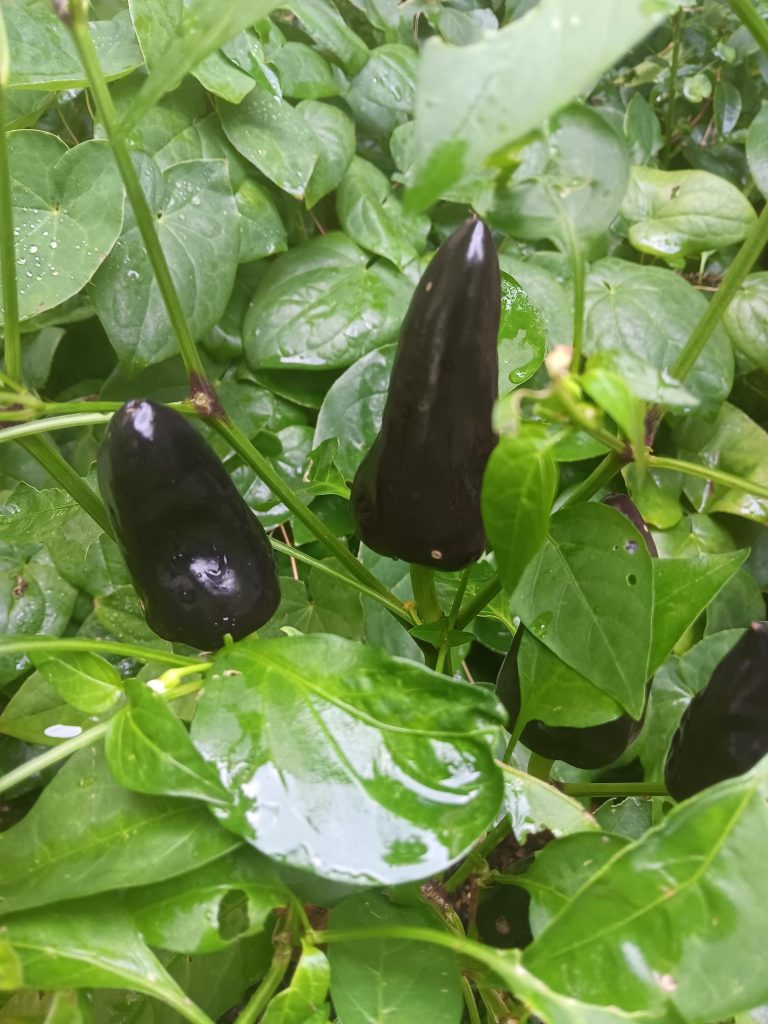
I hope this blog post inspired you to look beyond the appearance of your own garden and (making sure you have the correct identification and don’t eat raw anything you don’t know to be safe to do so) see how your garden tastes!
Bon Appetit!

